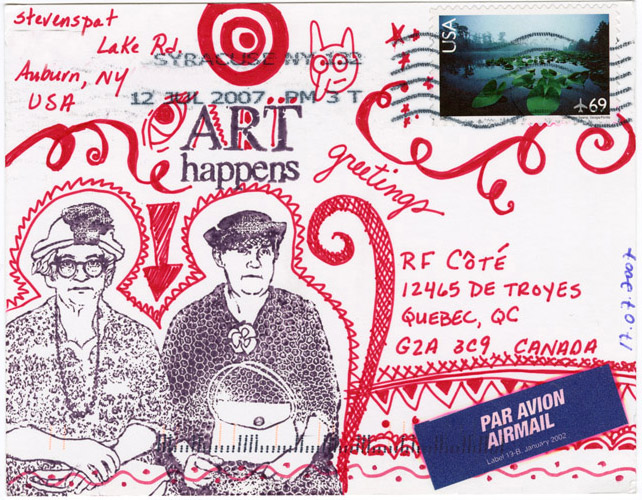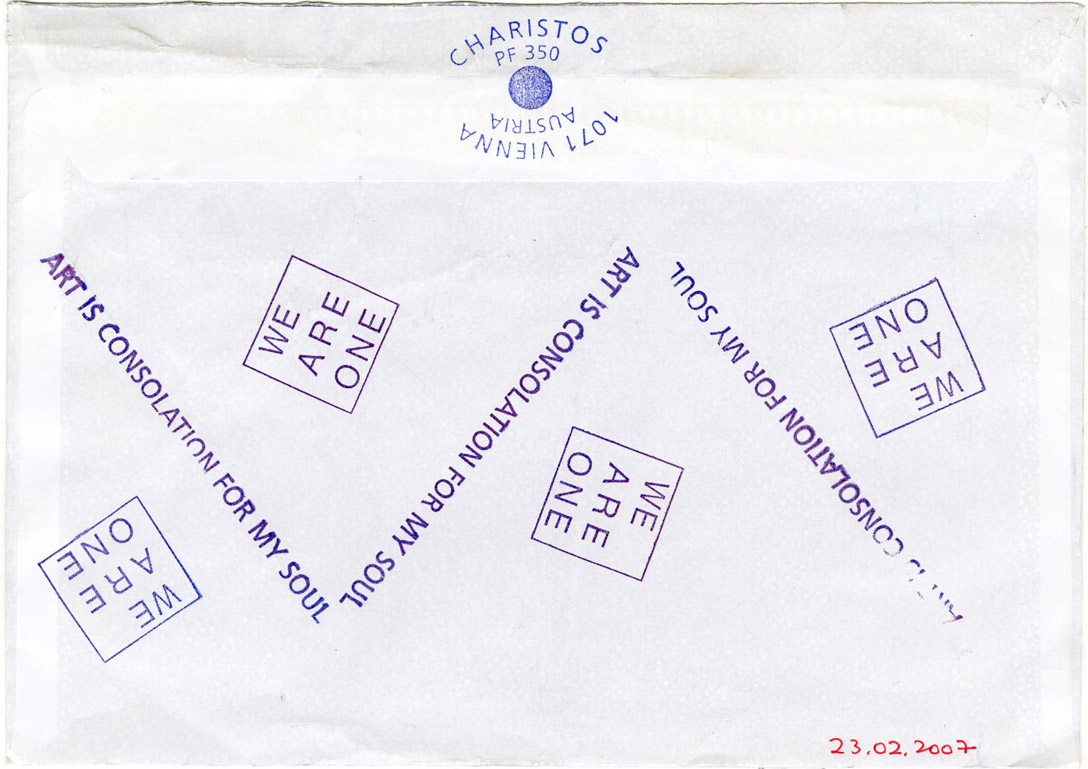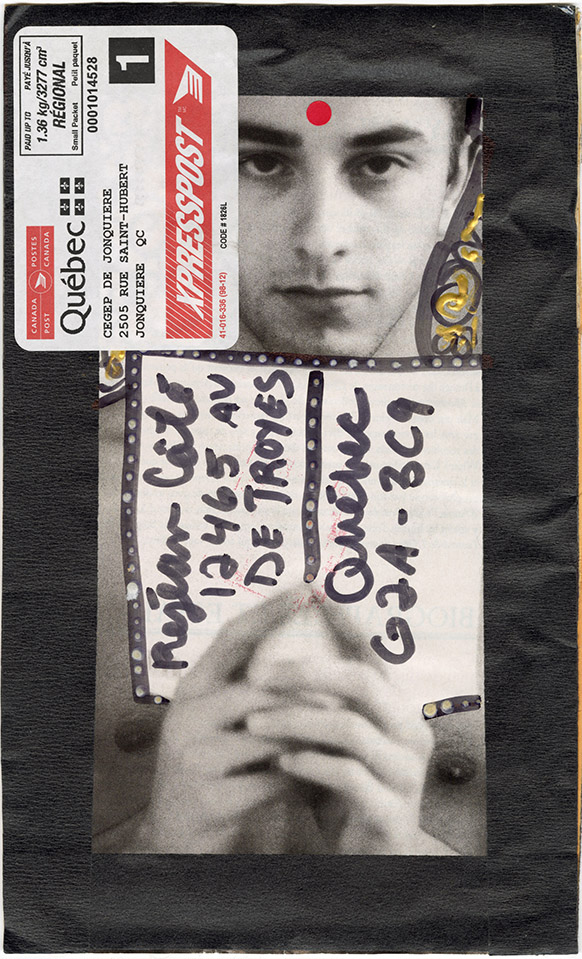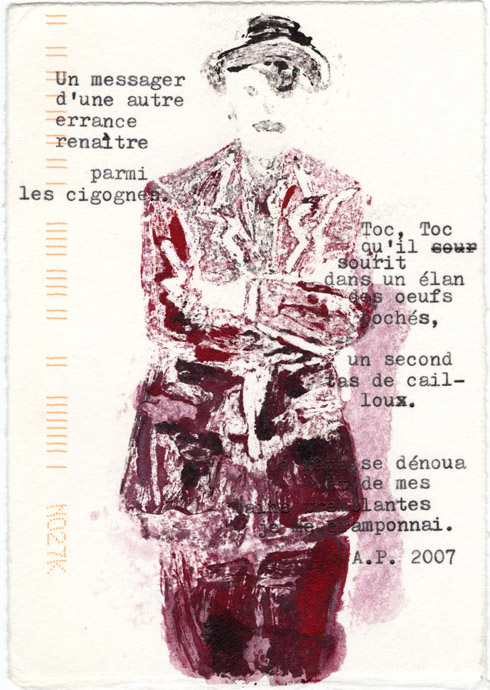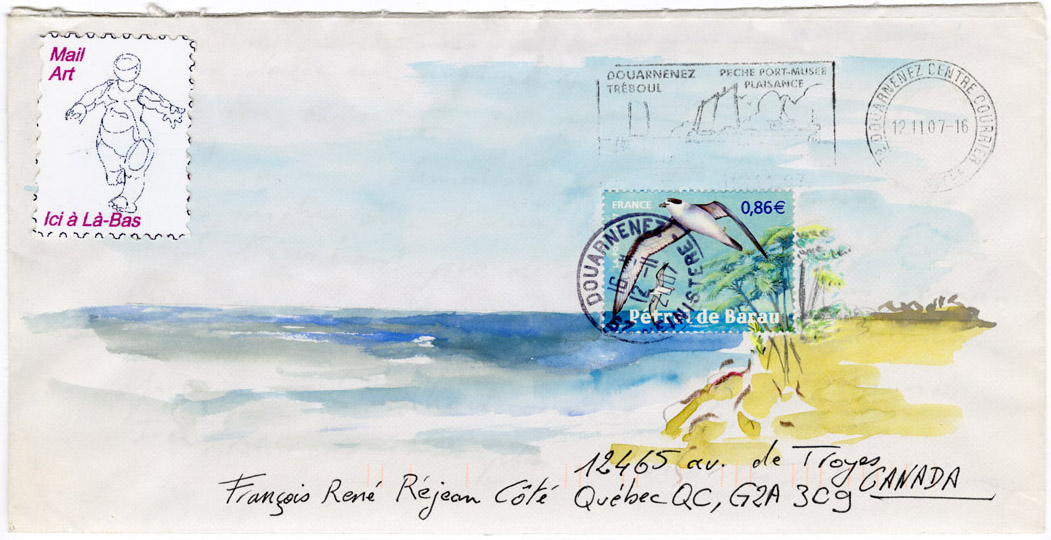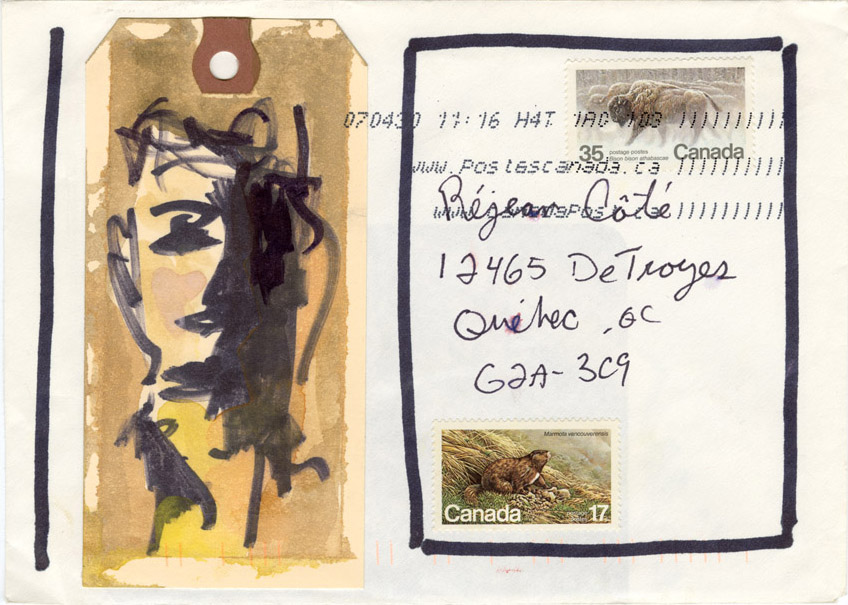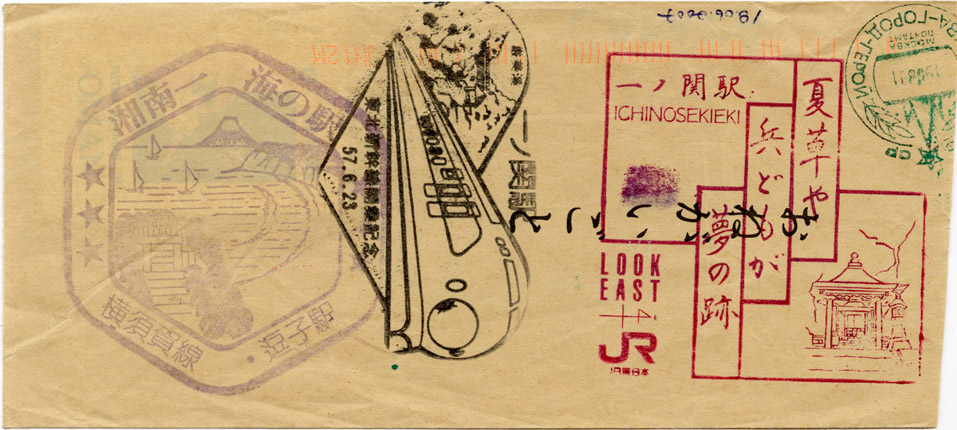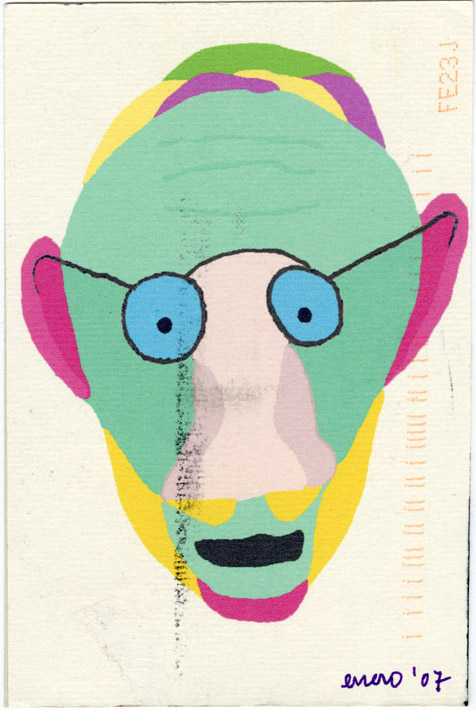In April 2018, I completed a Master’s of Information Studies at McGill University. During my studies, I learned about systems, standards, procedures, recommendations, rules and best practices for information management. Nearing the end of my degree, I find myself searching for some element of disruption. I crave bias, ambiguity, critical thought, imprint, subjectivity, and a willingness to problematize; a willingness to revolutionize.
Enter the Réjean F. Côté mail art collection.[1]1 (consultation available in Winter 2019). Réjean F. Côté Mail Art collection . In 2016, Artexte received a notable donation of mail art collected by the Gaspésie-born enthusiast. Comprised of zines, letters, decorated envelopes, collages, rubber stamp art, postcards, photographs and other ephemera, the collection can best be described as a treasure trove of collaborative art that defies traditional categorization. Within the context of my internship at Artexte, I undertook a small project to digitize a selection of the collection. My selection process was intuitive, rather than methodical. It was fluid and unbound, and inspired by the very nature of the content.
In the mail art anthology Eternal Network, Guy Bleus lists 44 statements on the aesthetic of mail art communications. Number 4: “The task of Mail-Art is to bring dysinformation into the information systems, discommunication into the communication systems, emotion into the logical systems.” [2]2Guy Bleus (1995). Communication: 44 statements. In C. Welch (Ed.), Eternal Network: A Mail Art Anthology. Calgary: University of Calgary Press, p. 85. Mail art, at its origin, prided itself on a fundamental freedom from ideology, national borders, systems of power and language. As an artistic movement, it has its documented origins in the 1960s, when a group of artists used postal correspondence to circulate spontaneous iterations of collages, drawings, newspaper clippings, found images and objects.[3]3Alexxa Gotthardt (2017). A brief history of mail art, from Cleopatra to Miranda July. Radical Pop and conceptual artist Ray Johnson in particular was interested in mail art’s uniquely democratic and accessible nature. Creative mail exchanges were inexpensive to produce, easily assembled, and most importantly, opened avenues for mass participation outside of the confines of the traditional art market. He enjoyed the possibility of interacting with strangers, as well as denying the art market its main purpose. A piece of mail art could not be bought or sold; only received.[3]3Alexxa Gotthardt (2017). A brief history of mail art, from Cleopatra to Miranda July.
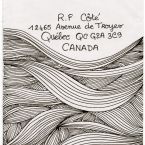


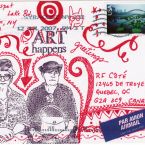
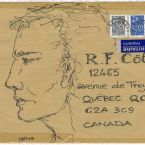
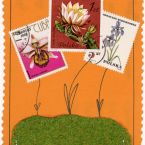
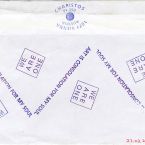
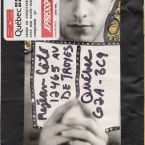




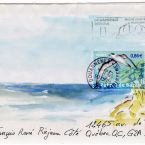




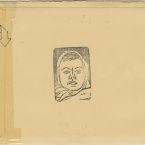
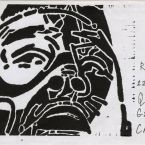
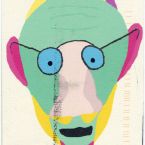

Jean Klimack, a Canadian multidisciplinary artist based in Beijing, stretched the idea of exchange and collective participation to a salivary degree. In 1998, Artexte received a request from the artist — through the mail — to chew a provided piece of gum for 10-15 minutes and return to the sender in an enclosed self-addressed envelope. Artexte’s contribution to the piece, along with 499 other masticated gum pieces were exhibited in a piece entitled Soft Labours, at Ace Art Inc. in Winnipeg in 1999.[4]4Jean Klimack (1999). Soft Labours.
The form and production of mail art has evolved over time. The internet has in many ways replicated the spirit of mail art, providing forums and networks for the free exchange of information and art in digital form. Postage rates have inflated, increasing the cost of exchange. The physical object however, is no less revered. Mail art has made its way into the collections of major art institutions including the Smithsonian, and continues to be the subject of study of exhibitions worldwide. In 2014, the Montreal Museum of Fine Arts’ Education department organized an exhibition of more than 800 works by students in primary, secondary and junior college levels from all over the world.[5]5Montreal Museum of Fine Arts (MBAM) (2014). Mail art. Brooklyn-based Groundfloor Gallery organizes a summer Mail Art Biennial entitled Priority Mail, in which it exhibits items sent to them through a bi-annual call-out.[6]6GroundFloor Gallery (2017). Priority mail: Our mail art summer biennial. Mail art is indeed alive and well.
As archivists and librarians, I am learning, we have a duty to bring our collections to life. The highly personal imprint, the bias, the disruptive thought, can be found on our very shelves. Through standardized description, we enable connections. Through the systematic task of cataloguing, we enable discovery. My brief foray into Réjean’s collection reminded me this. It is my hope, that after willingly losing myself in the content, that I have helped to highlight its humour, its joy, and the overt beauty of collective creation.
The presence of mail art in the Artexte collection has developed significantly over the years. The Réjean F. Côté mail art collection will be available for public consultation in 2019, and Côté’s zine Circulaire 132[1]1 (consultation available in Winter 2019). Réjean F. Côté Mail Art collection . is currently available for online viewing on e-artexte. Artexte possesses a number of specialized art periodicals that illustrate mail art exchange, including Stamp Axe[8]8 (1987 to 1990). Stamp Axe. and Fluxus Magazine[9]9George Brecht and Fluxus (1964 to 1970). Fluxus Magazine.. A number of seminal players in the mail art movement have artist dossiers in the collection as well, including Anna Banana[10]10 (c. 1975 -). Anna Banana., John Held Jr.[11]11 (1991 and 2015). John Held Jr.. and Ray Johnson[12]12 (1964-2009). Ray Johnson.. The Québec-based collective Réparation de Poésie[13]13 (c. 1991 -). Réparation de Poésie., founded by Jean-Claude Gagnon in 1985, has also contributed a number of artist books to Artexte. Finally, visitors are invited to discover a selection of Mail Art thematic publications[14]14 (c. 1969 -). Mail art publications. in the collection’s subjects and disciplines section. All are welcome to visit and consult these and more documents at any time during opening hours.





